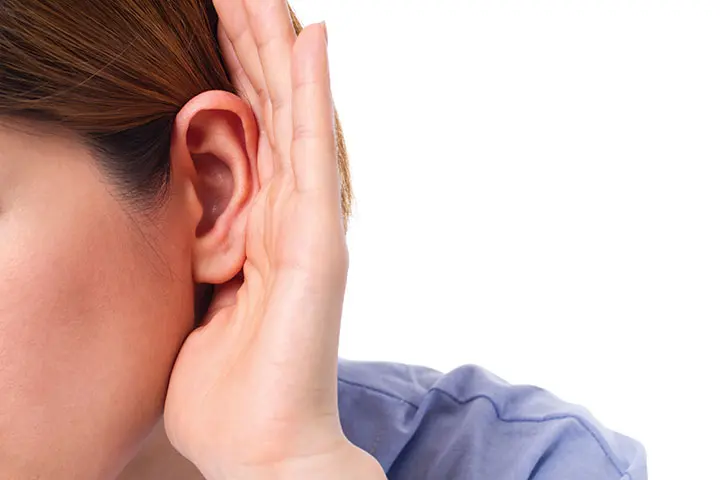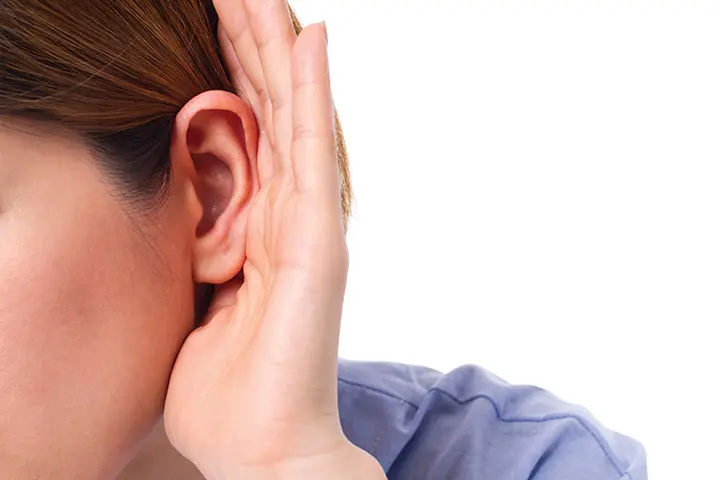Deafness itself doesn’t inherently hinder speech, but individuals born deaf or losing hearing early might face challenges in spoken language development. The absence of auditory input affects learning speech sounds and patterns. Limited exposure to spoken language can hinder understanding of pronunciation and intonation. Speech therapy and training can help, but the clarity of speech varies. Some deaf individuals use sign language or assistive devices instead of spoken language.
Physical differences might affect sound production. Proficiency in spoken language can differ among deaf individuals due to various factors like age of hearing loss and support received. Overall, while some may become proficient speakers, others might prefer alternative communication methods, creating a diverse spectrum of experiences among the deaf.
What impacts speech development in the deaf?

These factors provide insight into the complexities that influence speech development in deaf individuals, showcasing the multifaceted nature of how deafness impacts speech and communication abilities.
Lack of auditory input
Impact on learning speech sounds and patterns: For individuals born deaf or those who lose their hearing early, the absence of auditory input significantly affects their ability to learn speech sounds and patterns. Hearing plays a crucial role in understanding how sounds are formed and spoken language is structured. Without this auditory feedback, the development of accurate speech sounds becomes challenging. Consequently, this impediment can lead to difficulties in imitating and producing speech sounds, impacting overall speech clarity.
Limited exposure to spoken language
Challenges in understanding pronunciation and intonation: Deaf individuals with limited exposure to spoken language face challenges in grasping the nuances of pronunciation and intonation. These aspects are crucial for effective communication. Without the ability to hear and mimic these nuances, accurately reproducing speech sounds, rhythm, and stress patterns becomes difficult. Consequently, this limitation can affect their speech clarity and overall communication skills.
Influence of early communication methods
Use of sign language or assistive devices: Deaf individuals often adopt sign language or rely on assistive devices such as cochlear implants or hearing aids as primary modes of communication. While sign language offers a robust means of communication, it may lead to less emphasis on spoken language development. Additionally, the use of assistive devices might improve hearing to some extent, but it might not completely mitigate the impact of hearing loss on speech development.
Physical differences affecting sound production
Conditions associated with deafness: Certain conditions associated with deafness might cause physical differences in the vocal tract or structures related to speech production. These differences can affect the ability to accurately articulate certain sounds. Factors like cochlear abnormalities or structural differences in the vocal apparatus can contribute to variations in speech production among deaf individuals. Additionally, conditions like apraxia of speech or dysarthria might coexist, further complicating speech production and clarity in some cases.
How does the deaf community approach speech development?

The significance of speech therapy, acknowledging the variability in speech proficiency, and recognizing the adoption of alternative communication methods are essential aspects in supporting the diverse communication needs within the deaf community.
Importance of speech therapy and training
Speech therapy and specialized training play a pivotal role in supporting speech development among deaf individuals. These interventions focus on teaching techniques that help individuals understand and produce speech sounds more accurately. Through tailored exercises, therapists work on improving articulation, rhythm, and overall speech intelligibility.
Techniques like visual feedback or tactile cues are often employed to compensate for the lack of auditory input, aiding in the refinement of speech production skills. Continuous and structured speech therapy sessions contribute significantly to enhancing the speech capabilities of deaf individuals.
Variability in speech clarity and proficiency
The clarity and proficiency of speech among deaf individuals can vary widely due to several factors. Factors such as the age at which the individual lost their hearing, the extent of exposure to spoken language, the effectiveness of early interventions like hearing aids or cochlear implants, and the individual’s cognitive and motor skills all contribute to this variability.
Some individuals might achieve near-native speech proficiency with dedicated training and support, while others might face challenges in achieving the same level of clarity due to various limitations.
Adoption of alternative communication methods
Emphasis on sign language or other forms of communication: Deaf individuals often adopt alternative communication methods such as sign language as their primary mode of interaction. Sign language offers a rich and natural means of communication, allowing for expressive and nuanced conversations. However, the emphasis on sign language sometimes results in less focus on developing spoken language skills.
Additionally, some individuals might opt for other alternative communication methods, including using written language, gestures, or technology-assisted communication systems, based on personal preference and ease of use.
What factors shape diverse experiences in deaf speech development?
The impact of age-related factors, acknowledging varied communication preferences, and recognizing the spectrum of experiences within the deaf community highlight the need for personalized approaches and inclusive environments.
Impact of age at hearing loss and support received:
The age at which an individual experiences hearing loss significantly influences their speech and language development. Those who lose their hearing early, especially before acquiring language, may face more substantial challenges in speech acquisition. Early intervention and robust support systems, such as access to specialized educational programs, speech therapy, and familial support, can mitigate some of these challenges.
However, individuals who lose their hearing later in life might have already developed language skills, which can impact how they adapt to communication changes. Those who receive timely support and resources tailored to their needs tend to navigate these changes more effectively.
Preferences and choices regarding communication methods
Deaf individuals often have varied preferences when it comes to communication methods. Factors like cultural background, personal experiences, and access to resources play significant roles in shaping these preferences. Some might strongly prefer sign language due to its expressiveness and cultural significance within the deaf community.
Others might opt for spoken language, aided by technologies like cochlear implants or hearing aids, to integrate into predominantly hearing environments. Preferences can also change over time, influenced by experiences, communication success, and the evolving landscape of available communication technologies.
Spectrum of experiences in speech development within the deaf community
Within the deaf community, there exists a broad spectrum of experiences related to speech development. Some individuals might excel in spoken language, achieving near-native proficiency through dedicated training and support. Others may face challenges due to various factors like the severity of hearing loss, cognitive differences, or additional speech-related conditions.
This spectrum encompasses individuals with diverse communication abilities, from those who primarily use sign language to those who communicate predominantly through spoken language. It emphasizes the uniqueness of each individual’s journey in navigating speech development within the deaf community.
FAQ’s
Can a person born deaf gain hearing?
Yes, individuals born deaf can potentially gain hearing through technological interventions like cochlear implants or hearing aids, but the effectiveness varies for each person.
Can two deaf parents have a deaf baby?
Yes, it’s possible for two deaf parents to have a deaf child, but this occurrence is influenced by various genetic and non-genetic factors and doesn’t happen in all cases.
Will a deaf person have a deaf child?
The likelihood of a deaf person having a deaf child can vary. While genetics can play a role in some cases, it’s not always guaranteed that a deaf parent will have a deaf child.
How rare is being deaf?
Deafness is considered relatively rare, although its prevalence varies among different populations. It’s not extremely common within the general population.
Is it true that 90% of deaf children are born to hearing parents?
Yes, approximately 90% of deaf children are born to hearing parents. Deafness within families where both parents are deaf is less common.
Do deaf people have a better sense of touch?
Yes, some research suggests that deaf individuals may have a heightened sense of touch compared to hearing individuals due to the brain reallocating resources from hearing to other sensory modalities.
Final Words
In short, deaf people might find it hard to speak because they can’t hear sounds well. This makes learning how to talk tricky. Also, they might not hear spoken words clearly, so copying how words sound becomes tough. Some deaf people like using sign language or other ways to communicate. Sometimes, their body might also make it hard for them to talk clearly. Helping them learn to speak better can be different for each person. Some might talk well, while others might find it tricky. Everyone has their own way of communicating. It’s important to understand and support them in their own way of talking and understanding.

